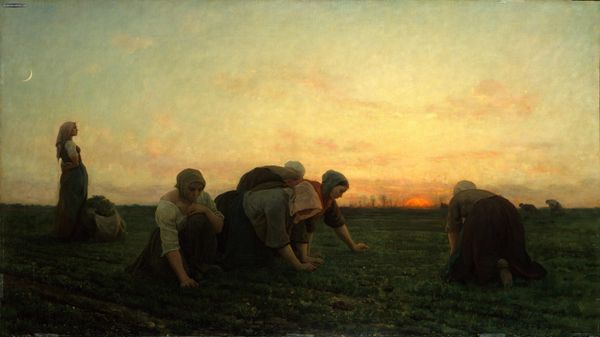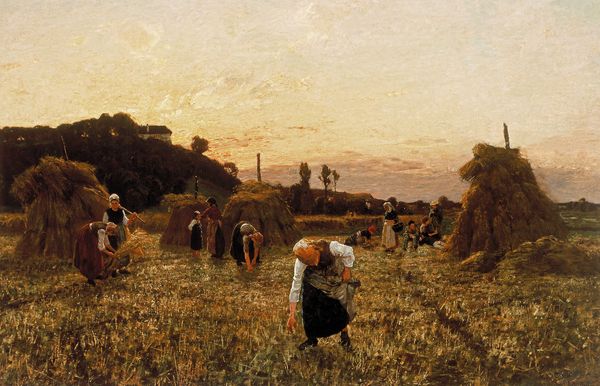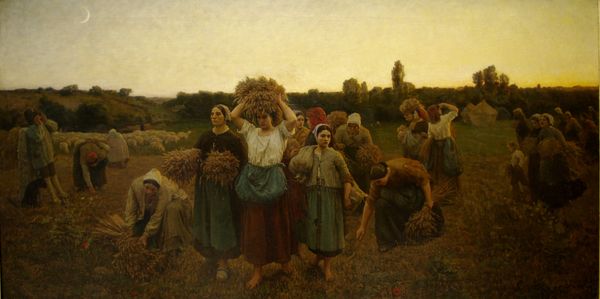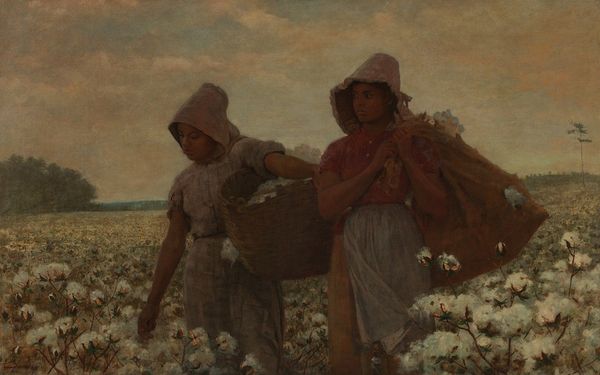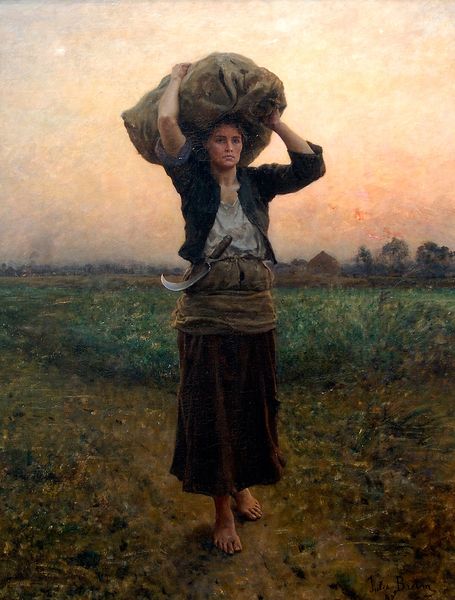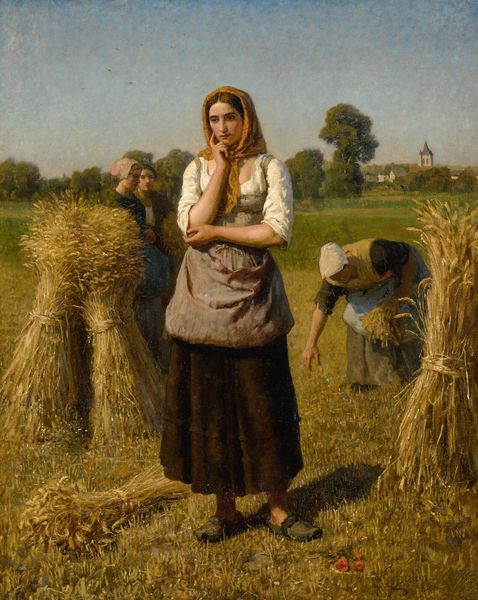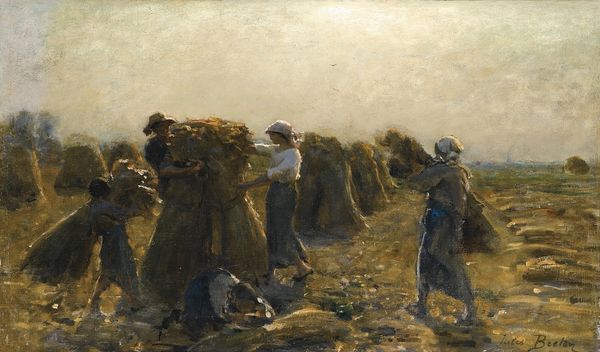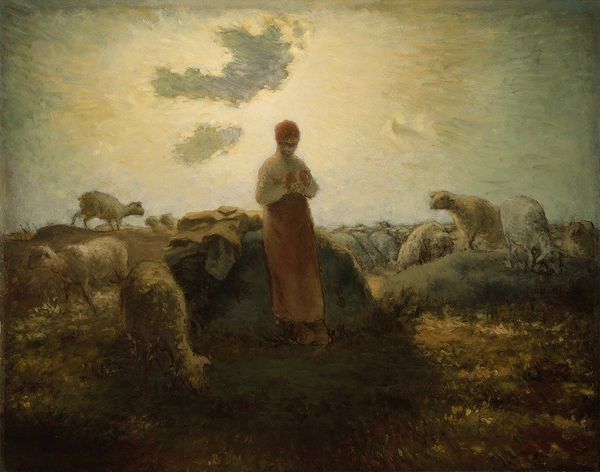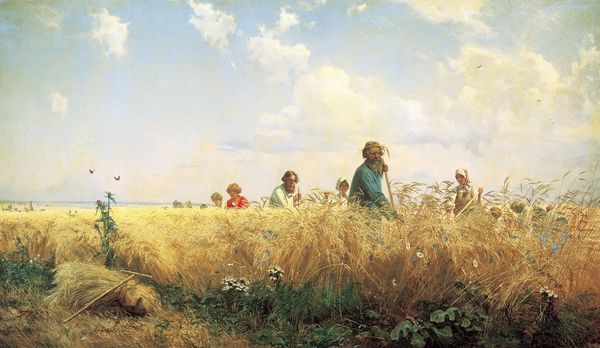
Dimensions: 84 x 120 cm
Copyright: Public domain
Jules Breton painted “The End of the Working Day,” now at the Brooklyn Museum, likely around the late 19th century, capturing women returning from the fields, silhouetted against a setting sun. The sacks they carry are heavy, their shoulders hunched, embodying the weight of labor passed down through generations. We see echoes of this burden in ancient Egyptian tomb paintings, where figures carry similar loads, a motif that resurfaces in Millet's rural scenes. The sun, a potent symbol, casts long shadows, reminiscent of classical depictions of dusk as a time of reflection. But, in Breton’s rendering, it is tinged with the exhaustion of the day. This image speaks to a collective memory of agrarian life, imbued with the bittersweet emotions of toil and rest. Ultimately, this artwork shows a cyclical progression: from sunrise to sunset, from labor to rest. A powerful force, engaging viewers on a deep, subconscious level, tapping into primal human experiences.
Comments
No comments
Be the first to comment and join the conversation on the ultimate creative platform.
